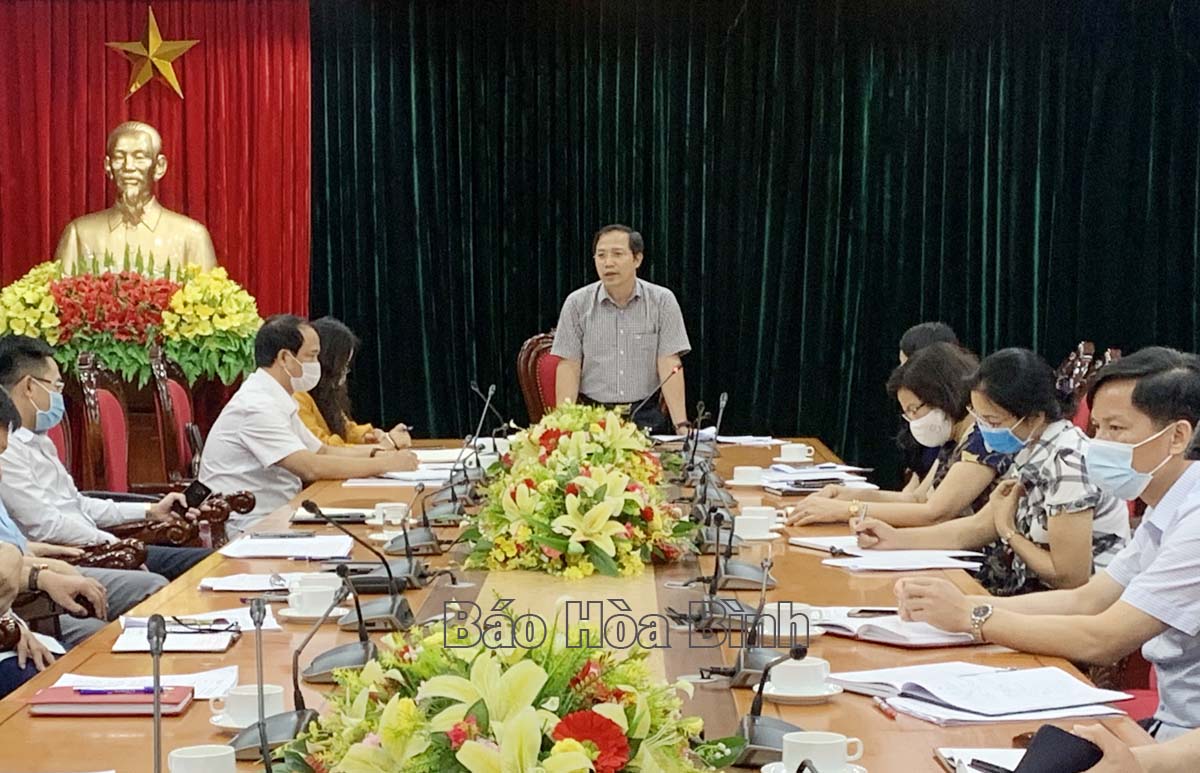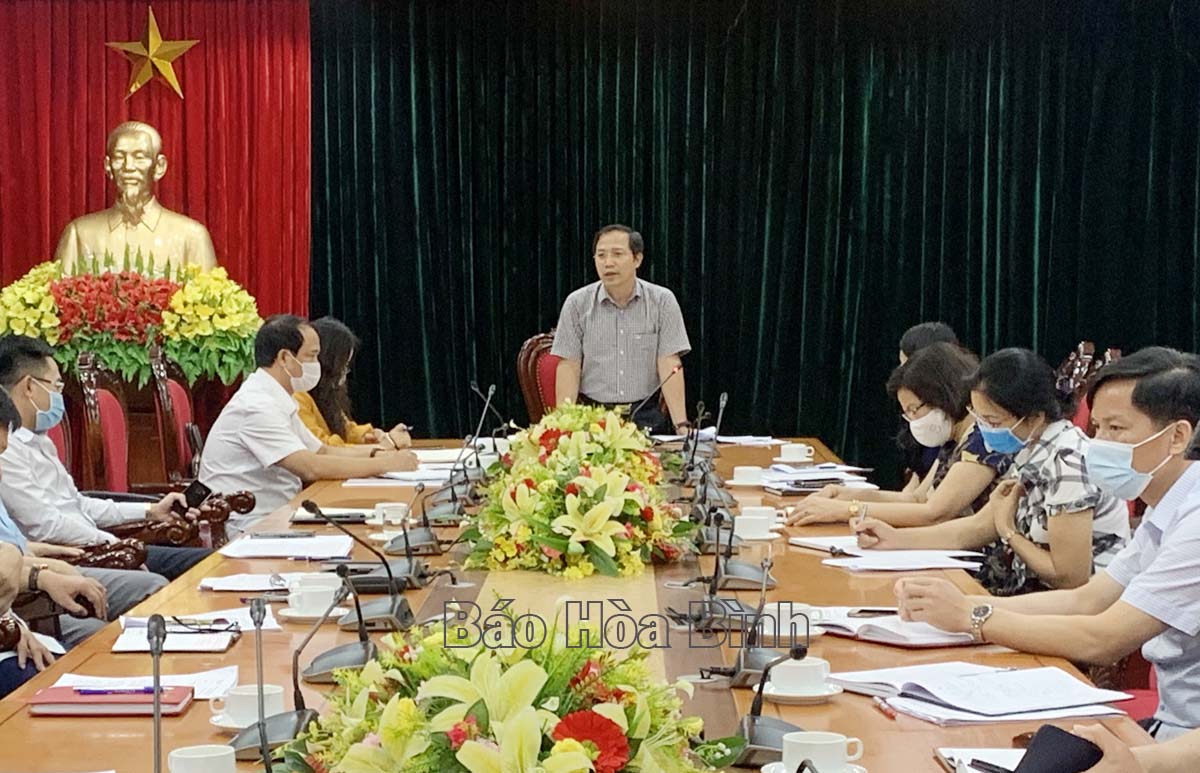
(HBO) – The People’s Committee of Hoa Binh province on June 10 held a meeting to gather ideas on the contents of a tourism development plan in the 2021-2025 period with a vision to 2030. Nguyen Van Toan, Vice Chairman of the People's Committee and head of the provincial Steering Committee for Tourism Development chaired the meeting.
Photo: Nguyen Van Toan, Vice Chairman of the provincial
People’s Committee addresses the meeting.
The draft plan for Hoa Binh's tourism development in the 2021-2025 period with
a vision to 2030 underlined the significance of designing a future plan and the
real development situation of the local tourism in the 2016-2020 period, along
with orientations and solutions to boost the sector's development in the next
five years with a vision to 2030.
Specifically, in the 2021-2025 period, the province aims to attract 6.3
trillion VND (273.7 million USD) of investment in developing infrastructure
serving tourism and high quality tourism products.
By 2025, the province hopes to welcome 4.9 million visitors with earnings from
tourism reaching about 5.4 trillion VND, creating jobs for about 26,000
labourers. Hoa Binh will strive to make Hoa Binh Lake tourism site meet basic
requirements of a national tourism area in 2025.
In the 2025-2030 period, the province aims to lure 11.9
trillion VND in investment, developing a large number of typical, attractive
and high quality tourism products.
In the period, the province expects to attract 7.3 million visitors and earned
11 trillion VND in tourism revenue. The sector is hoped to create jobs for
about 47,000 labourers. The province will turn the Hoa Binh Lake into a
national tourist site and make tourism a spearhead sector, according to the plan.
Concluding the meeting, Nguyen Van Toan, Vice Chairman of the provincial
People’s Committee, lauded the ideas of participants. He assigned the
provincial Department of Culture, Sports and Tourism and the standing office of
the Steering Committee for Tourism Development to summarise participants’
opinions and finalise the plan promptly.
It is necessary to point out outstanding achievements and major shortcomings
and weaknesses of the sector, defining reasons behind the situation and giving
specific and feasible solutions, he stressed.
Meanwhile, it is crucial to pay greater attention to tourism
planning, focusing on investing in expanding tourism infrastructure in the
master plan for the development of the Hoa Binh Lake national tourist area, he
said.
Toan also stressed the need to clarify the strength of the local tourism sector
with focus on cultural, spiritual and ecology tourism, while concentrating on
building tourism products, expanding markets and designing tours linking
tourist sites inside and outside the province./.
Located just a 20-minute drive from Hoa Binh City, Ora Hill Farmstay & Glamping Hoa Binh is a captivating new destination nestled in Mo hamlet, Bình Thanh commune, Cao Phong district. Combining farming with leisure, this tranquil retreat is perfect for those seeking balance, joy, and an immersive experience in the expansive beauty of nature.
Muong Bi - Tan Lac is renowned as one of the four famous Muong regions in Hoa Binh province. Blessed by nature with a favourable climate and stunning landscapes, Tan Lac holds great advantages for tourism development. The local tourism industry has made remarkable strides in recent times thanks to the attention and support from the local authorities and sectors.
With its strategic location, well-developed transport network, and diverse soil and climatic conditions, Hoa Binh is emerging as a must-visit destination in Vietnam's northwestern tourism corridor. The province boasts numerous attractions, including the Kim Boi hot springs (Kim Boi district), the Dau Rong cave complex (Cao Phong), the Mai Chau valley (Mai Chau), and the iconic Hoa Binh hydropower plant.
The northern mountainous province of Hoa Binh has been listed among the 71 most beautiful places to visit worldwide by the prestigious US travel magazine Condé Nast Traveller.
Hoa Binh province’s rich natural and cultural resources position it as a prime location for developing community-based tourism (CBT). In recent years, support from central and provincial policies, as well as assistance from non-governmental organisations, have encouraged local ethnic minority and mountainous communities to actively engage in the sector.



